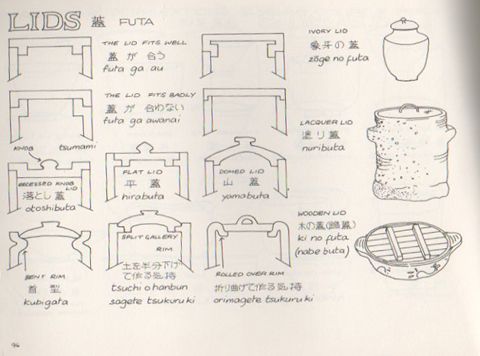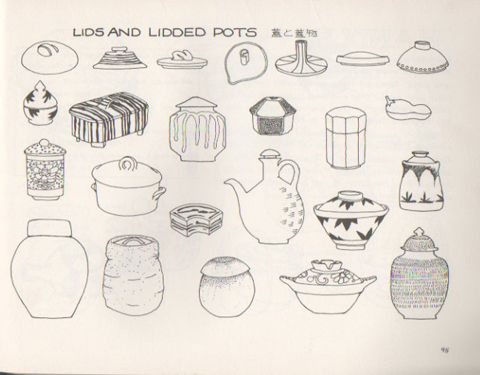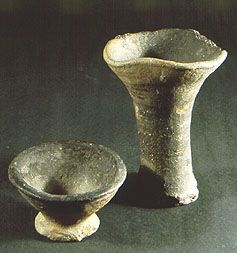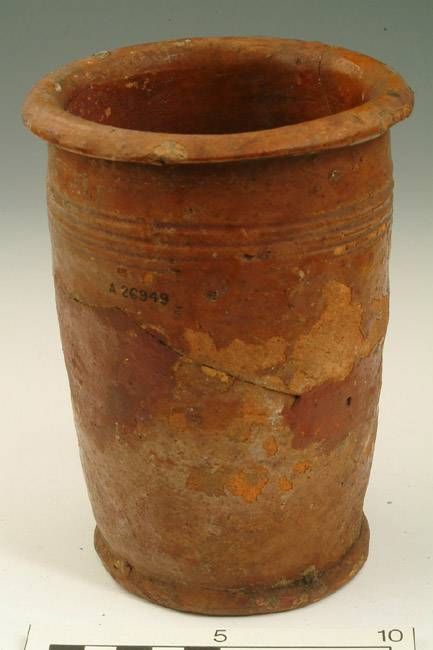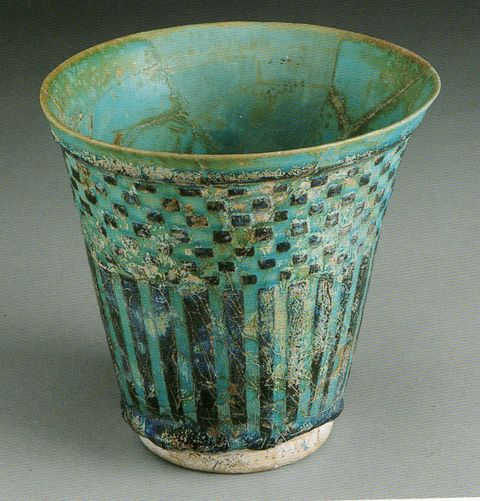 The Original Piece from “Ceramics from Islamic Lands” by Oliver Watson.
The Original Piece from “Ceramics from Islamic Lands” by Oliver Watson.
Throughout history, ceramics have been an important part of people’s lives. Clay was used to line water baskets to stop them from leaking, helping women carry water from riverbank to hut. Fired clay was used to serve and cook dinner in, to build homes with, and as jewelry decoration. All cultures and all walks of life used clay, whether it was weapons to protect their homes, the tiles they walked over or even the cups they drank from. Its been used before our time period and still, to this day; we still use this very functional art form.
Clay is a soft, sedimentary from rock (igneous) that had been eroded into a mud-like consistency by nature (weather, wind, rain, etc). Fire solidifies the chemicals of the clay, melding them into one package. Once fired, you’ve basically created your own rock. There are three types of clay bodies: earthenware, stoneware and porcelain.
Most potters during our years of study used manual potters wheels to create their wares after digging their own clay from the ground. These wheels varied from “slave” wheels (meaning another potter would help them rotate the wheel) to various types of kick wheels. Clay was found from clay deposits locally to the artisans, developed by hand into a workable material by adding various natural materials to the clay (like sand or ground up bisque). The heavy processing of clay made the clay able to withstand the fiery temperatures of the kilns as well as controlling shrinking and plasticity.
The wheel head placed firmly on a spinning cross section with a flywheel at its base that was kicked in order to make it rotate, creating motion of the actual wheel head. Depending on how fast or how slow the wheel spun, it would vary the effects, textures and size of the piece being made.
Stoneware is fired in a kiln at lower temperatures because of the clay’s melting points. In period, Stoneware was the main clay that was available and the potter’s technology; they only knew how to fire to certain temperatures. Pieces are fired before they fully vitrify (meld together) to allow the clay’s natural pores to stay open. With the addition of sand, this helps the clay body withstand the thermal shock of being put above hot coals (the pores allow it to expand and contract depending on the temperatures being applied to it). Without this, a pot can act like a drinking glass when boiling hot water is poured in and crack. In Period, lead glaze was used.
In our century, I used an electric wheel and an electric kiln. I also bought my clay, instead of digging and processing it myself.
As pictured, this Beaker in Period is:
· A Frit body
· Decoration carved through black slip
· Under a Turquoise Glaze
· Iran
· Found in Syria
· 12-13th Century
· Found in “Ceramics from Islamic Lands” by Oliver Watson page 336
What I did:
· A Stoneware clay body
· Decoration carved through black slip
· Under a Turquoise Glaze
· Simplified decoration and resized for more modern use
A “slip” is thinned potter's clay (usually thinned with water and deflocculants) used for decorating or coating ceramics. Also referred to as an engobe.
A Frit body has a lot of alkali-lime-lead-silica within it, giving it a very glass-like appearance. Frit is a melter in modern times for glass, metal and clay. I used stoneware instead because the stoneware I use is very durable. All the glazes and engobes/slips were tested and used in Period manner, applied and used in a Period way. Only, everything is very food safe.
Bibliography:
“Ceramics from Islamic Lands” by Oliver Watson. Thamas & Hudson Inc. 2004. New York.
“The Craft and Art of Clay” by Susan Peterson, Pretence Hall Publishing. 1995. New York.
“Pottery Decoration” by Thomas Shafer, Watson-Guptill Publications Inc. 1976. New York.
"The three books of the potter's art" by Cipriano Piccolpasso. Victoria and Albert Museum. 1934. New York.
“World Ceramics” by Robert Charleston. Hamlyn Publishing Group. 1971. England.
Wikipedia under Clay and Ceramics
